Just over an hour from London is an ancient town with a remarkable series of subterranean spaces, and a large castle nearby, both of which comfortably fill a day out.
Winchelsea Cellars
Winchelsea is the town, and it has a remarkable layout and history. It’s actually the second Winchelsea town, as the first was built down next to the coast, but was destroyed in a storm in 1287. Permission was granted to build a replacement town on a high ridge nearby, and as a purpose-built town, it’s almost unique in having a regular grid layout of streets.
The town was still a port town with a harbour next to it, and was a major importer of wine — and the best place to store wine is in cellars. So, the town built a huge number of cellars first, and the houses on top came second.
Being close to the coast, it was often attacked by the French, so had a defensive wall, and was at one time much larger, but the silting up of the harbour destroyed its prosperity, and today it’s a sleepy picturesque village – that offers tours of the cellars.
About 17 cellars still survive, and a tour will typically show off three of them.
They’re not huge or richly decorated, being basically warehouses for wine, but there’s still a bit of excitement to climb down the 700+ year old stone steps into these subterranean spaces that were never meant to be admired. Bring a torch as few have lighting, but you’re never far from the entrance so it’s not a dark and dank space, but more a medieval undercroft, cool and dry.
One of the cellars is particularly large though, and having been split into three rooms, gets atmospherically dark and gloomy as you get deeper into the cellar. Notice the carving on the stone supports, and the mysterious niches in the far wall.
The tour lasts about 60-90 minutes, and is a wonderful chance to see spaces that are not seen by that many people.
The cellar tour was at 11am, and having arrived at 9am, there’s surprisingly enough in the town centre to fill the time. The remains of the stone gates are very much worth taking the time to visit. Two are right in the town centre, and do take care to step into the road at Strand Gate, as you can go inside and have a look up.
Further out of town is the New Gate, built to give added protection to the town, but the French got in anyway, allegedly thanks to a traitor in the town who opened the doors. The New Gate is about a 15 minute walk from the town centre, but worth it as you also pass the stone wall remains of an old almshouse.
At 10am, the town museum opens, and is worth a visit. Also, the church opens for tea and cakes, and the stained glass windows are amazing to see. And yes, Spike Milligan’s grave is in front of the church with that famous slogan on it. There’s only one shop in the town, and I can strongly recommend the sausage rolls for lunch, as that was the best one I have eaten in many a year. There’s a very helpful map of the local attractions to look for in the town centre — look for the covered bus stop by the church, and it’s in there.
The cellar tours take place throughout the spring to autumn and must be booked in advance from here. You pay cash on the day.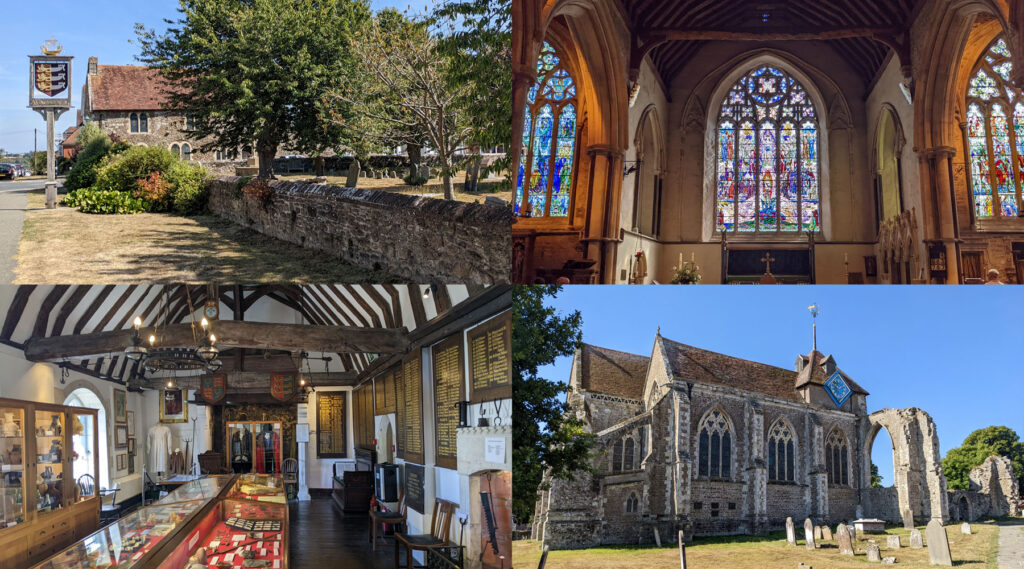
Camber Castle
Once you’ve wandered around Winchelsea, and done the cellar tours, it’s time to head over to Camber Castle.
It takes about 40 minutes to walk to the castle, if you ignore certain online mapping websites and use the OS map showing the footpaths. So head to the town of Winchelsea Beach, and along Sea Road until you get to the junction with Jenny Lane. Head along here, past the farmhouses and through the gate into the fields, and there are footpaths that’ll take you to the castle.
It’s easy to see Camber Castle, for although it’s low lying, it’s wide. Very wide. Actually really quite big in fact, and as you approach through the fields, it quickly dominates the landscape.
The castle was built in the 16th century to protect England from the French and was twice expanded in size, but never fired a canon in anger, and although built close to the coast, the changing landscape meant that within a century it was too far from the coast to be of much use in firing at French ships and was closed in 1637.
It’s a ruin, once painted by Turner, and now a roosting place for Terns.
Surrounded by fields and a nature reserve, and used by nesting birds, although anyone can walk around the outside anytime they like, to go inside has to wait until the birds have flown the nest. In fact, the locked gates are opened to visitors on just three afternoons a year.
On my visit, I arrived far too early and was probably the first person to turn up for a tour, and the guide had to go back home for bolt-cutters as it seemed someone had locked the gates with the wrong padlock. By the time he was back, quite a crowd had built up to go inside, and we were asked to split into two groups. Someone loudly declared the children should go first, and that somewhat sealed the fate for those of us without children to wait another hour for a second tour, as none of us really wanted to be the “grumpy old man” who moans that were all here before the families arrived and why should we go last, etc.
I’d recommend bringing a picnic blanket to sit on in case that turns out to be a regular event, as the sheep leave a lot of small brown bits all over the ground. So, two hours after I arrived, finally, in we went. As it turns out, a few members of the younger group had been a bit, umm, problematic, so maybe the wait wasn’t that bad after all.
And oh my, get a look at that tower in the centre and the huge spaces within. And there’s a lot of walking bent over as the only way into the central tower is through low tunnels that run under the walls. There are a lot of low defensive corridors here to walk around, and they all add magnificently to the atmosphere of a castle built for war.
Lots of reminders to keep away from the crumbling walls, which were occasionally ignored and obeyed after a sharp rebuke.
On a really hot summer’s day, it felt more like the Mediterranean ruins I visited as a child than a UK castle as it’s just so incredibly atmospheric to wander around and learn some of the history of a castle that not many people get to see inside. At one point, rubble was piled up inside the stirrup chambers, and although two have been cleared, one remains filled up, and a steep climb up, gives a good view of the castle interior from a high vantage point.
The tour guide admitted that he’s not a historian, so regularly checked notes, but he knew enough to give a picture of what the castle was like and how it evolved, but really it’s just such an atmospheric place to stand in that you almost don’t need the history.
Just soak up the experience.
Although I was quite ripe about the hour-long delay on the day – especially how it was handled — the tour was worth waiting for. Maybe they should require pre-booking in future to control numbers, or officially run several tours on the open day. The big downside of the late tour was that by the time I got to Rye, it was too late to visit the museum and tower there, so Rye will have to wait for another day.
Although you can walk around the outside of the castle at any time, the tours to go inside take place on just three afternoons of the year, on the first Saturday of August, September and October at 2pm. No booking, and either pay cash for the tour or it’s free for English Heritage members.
Getting to Winchelsea
If you’re only going to the castle, then it’s going to be a lot more convenient to catch a train to Rye and walk to the castle from there.
If, as I did, you want to take in the cellars and the castle, and fortunately, the cellar tours take place on the same day that the castle is open – then buy a return train ticket to Winchelsea and then walk/cycle to Rye via the castle to catch the train back from there.
Trains to Winchelsea station run every other hour, and that means having to arrive at 8:50am, which gives you about two hours in Winchelsea before the cellar tour, but you’ll fill the time easily.
Trains from London leave St Pancras and Stratford International on HS1, with a change at Ashford International for the train to Winchelsea. As a tip, if it’s convenient to catch the train at Stratford International, you’ll avoid paying for a London travel fare into Zone 1 to catch the train at St Pancras.
Remember, if you have a RailCard, then you get a third off the train fare.
If you buy a return to Winchelsea, you can still catch the hourly train back to London from Rye.

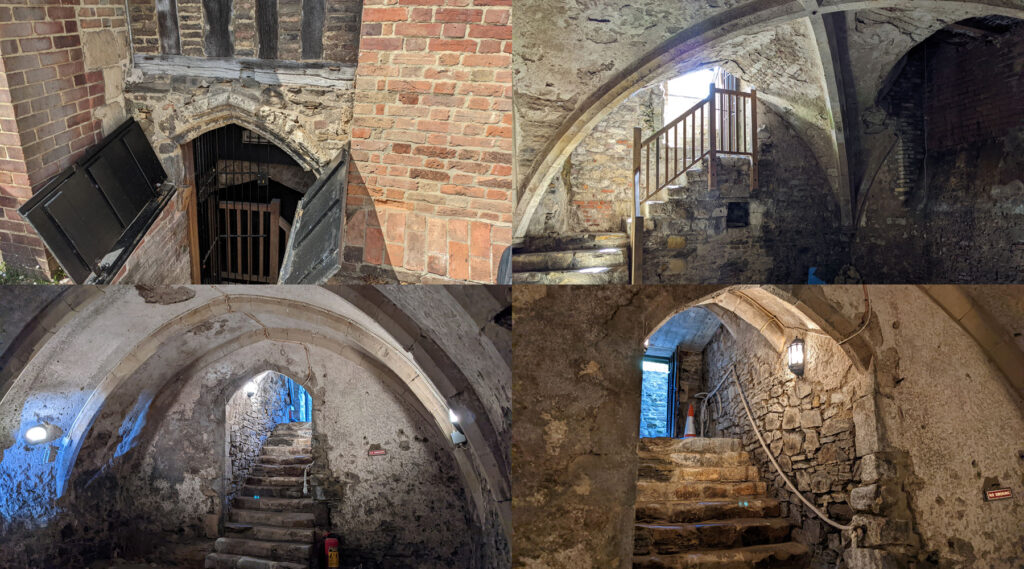
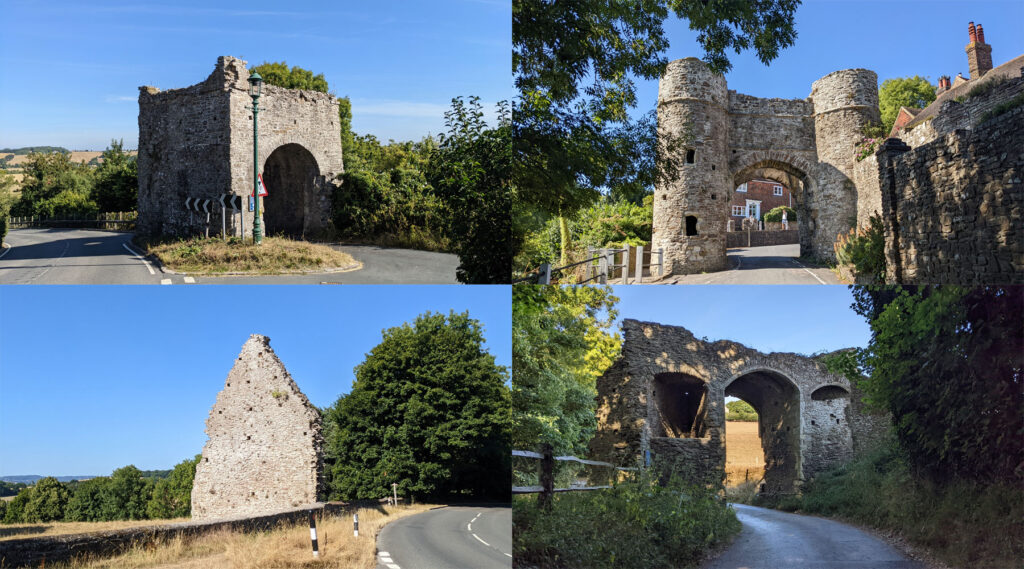
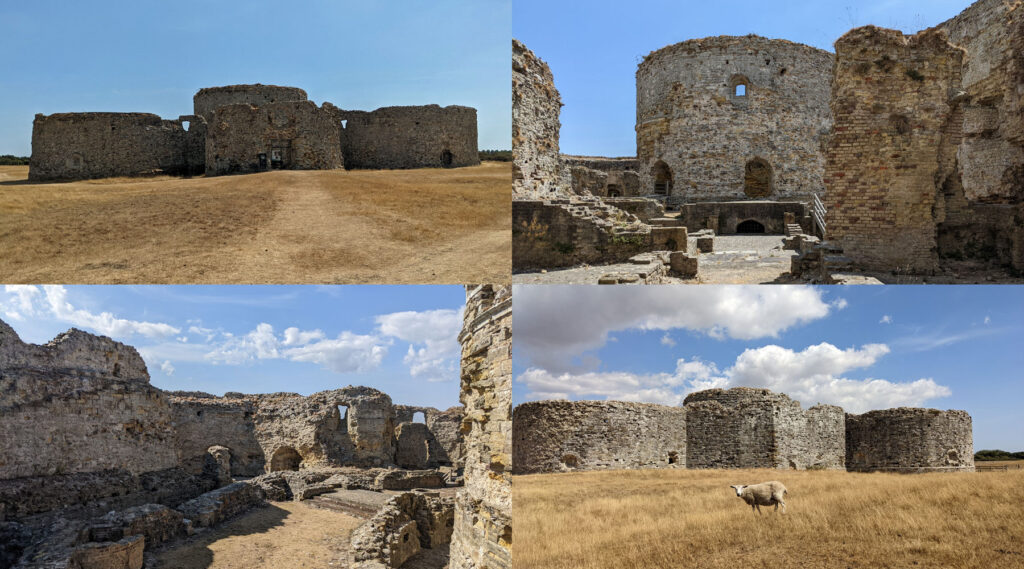
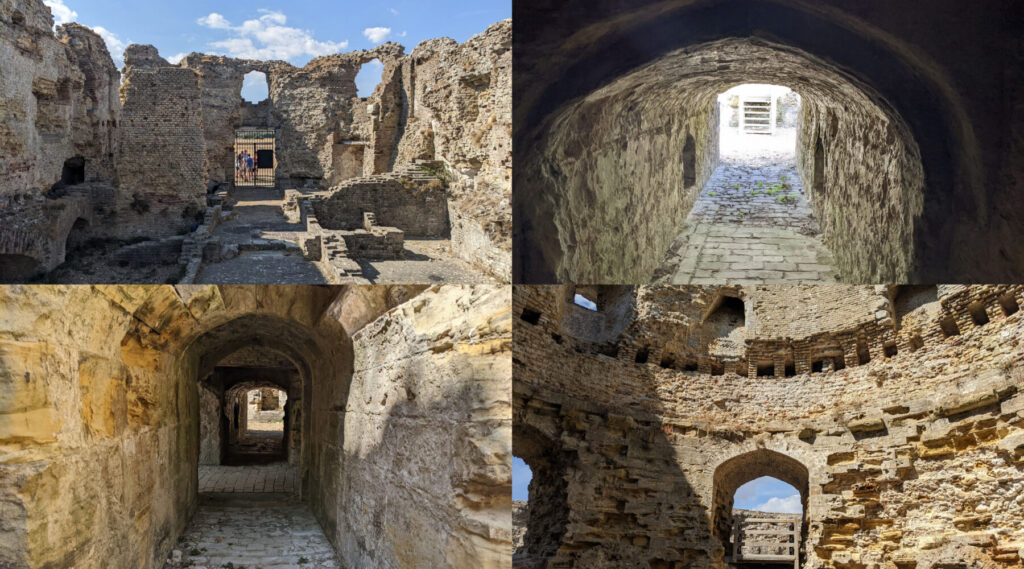
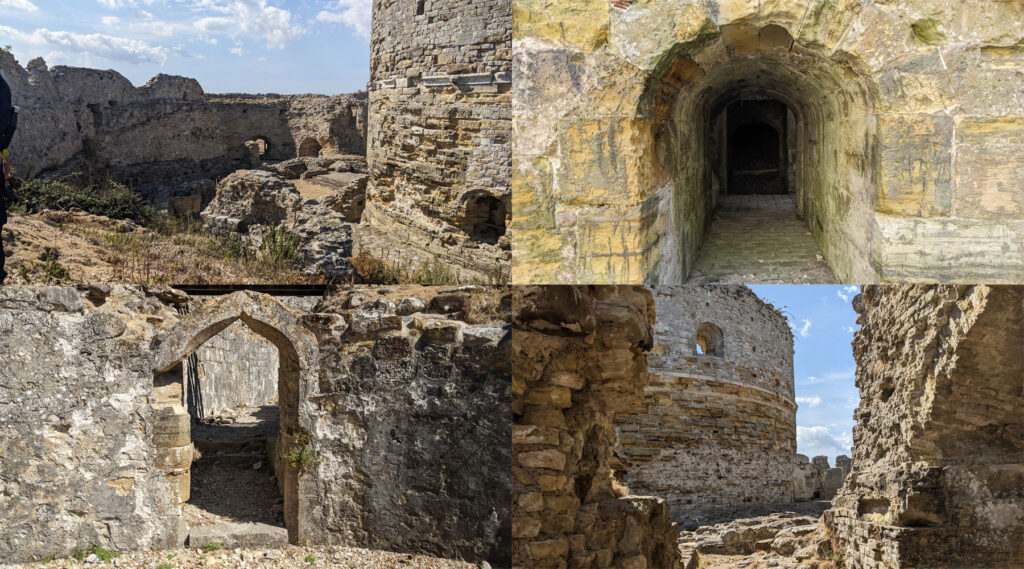






Us grumpy old men are grumpy for a reason. Let the kids play with the sheep droppings while we get a nooks and crannies tour…
I visited Rye last year and did a good walk round the nature reserve via the castle exterior. You need a car to get the distances sensible. Winchelsea and the church is good, never managed the cellars.
I am not sure a car is needed – the walk between Rye and Winchelsea is only about 50 minutes.
Glad you’ll be doing Rye on another day! Kinda where I grew up. Stay at the Mermaid, my late dad & stepmum lived right opposite. Rye also has a fine Town Model, with an audio/light show:
https://www.ryeheritage.co.uk/
And in the neighbourhood, you’re not far from the charming Romney Hythe and Dymchurch Railway!
Had I been there I would have been that grumpy old man. Why the heck should kids go first especially if others have been waiting? Pretty poor.
I stayed in Winchelsea on holidays in the 1950’s . We stayed in a bungalow called Silver Bell , the garden was like an extension to the beach just pebbles.There were some railway carriages down the lane which were used as holiday accommodation.
We used to go into Rye for shopping and a visit The Cobbles a tea rooms , the lady owner used to cook her own shortbread. Funny the things you remember from years ago.
I would love to revisit Winchelsea.
I was a resident of Winchelsea for 10 years. To get a good feel for this little known but magical place it is worth listening to Clare Balding’s Ramblings walk on BBC Sounds. Then visit as suggested here. Any history lover will viscerally feel the stories from its glory days as one of England’s most important medieval ports.
Now closed for safety reasons https://www.sussexexpress.co.uk/news/people/english-heritage-close-hastings-area-attraction-to-the-public-for-safety-reasons-4245601